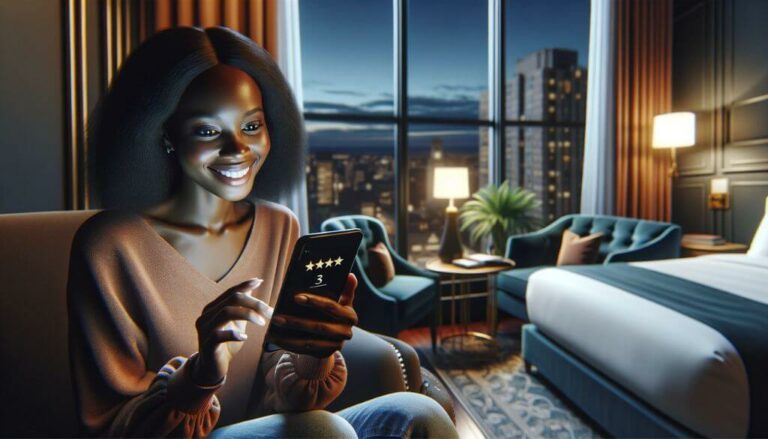
You know that capacity planning can help your attraction ensure it has enough resources — such as employees and equipment — to meet guest demand. But where do you start?
Every business has different revenue goals and growth projections, meaning that capacity planning isn’t a one-size-fit-all strategic process.
That being said, there are a few different strategies that most companies use for identifying their current capacity and tracking utilization.
In this post, you’ll learn about the three most common capacity planning strategies that can help you sell more tours and reduce capacity gaps due to lack of resources.
- What is capacity planning?
- What are capacity planning strategies?
- Some benefits of capacity planning
- Capacity planning vs. resource planning
- Why does this matter for travel and tourism companies?
- What does the capacity planning process entail?
- 3 types of capacity planning strategies
- A helpful capacity planning tool
What is capacity planning?
Capacity planning, also known as yield management, involves strategically managing and allocating resources, such as staff, space, and equipment, to meet fluctuating customer demand while ensuring an optimal visitor experience. This process is crucial for balancing operational efficiency, maintaining proper resource allocation, maximizing revenue, and maintaining high levels of customer satisfaction by avoiding overcrowding or underutilization.
What are capacity planning strategies?
Businesses can approach capacity planning in different ways. The goal of capacity planning strategy is to help operators decide what resources are needed to meet customer demand over a given period of time.
While some companies might play it safe and refrain from hiring until their staff is working at full capacity, others might take a more aggressive approach. For example, an attraction that’s planning for an extra busy year might hire lots of new employees to prepare for an influx of bookings. Another operator may wait to see how the year starts before increasing their current capacity.
Both of these approaches can be effective capacity planning strategies. Which one should you choose? Let’s delve into the different capacity planning strategies and how they may best meet your company’s needs.
Short-term vs. long-term capacity planning
Your attraction will likely experience both short-term and long-term fluctuations in guest demand.
Short-term capacity planning focuses on the seasonal and irregular fluctuations you might see, such as an influx of bookings during school vacations or a holiday weekend. This involves tracking capacity in real-time and adjusting your resource pool according to that change in consumer demand.
For example, a food tour company might hire a couple of freelance tour guides for the busy summer season.
Long-term capacity planning, on the other hand, is the process through which a company prepares for future growth and expansion.
Can your current staff, equipment inventory, or supply chain handle your projected growth?
Effective capacity management will give you a better understanding of what needs to be done before adding new tours or expanding to new markets.
Some benefits of capacity planning
Here are some of the top benefits for having a capacity strategy in place:
- Optimized resource availability. This ensures efficient use of staff, space, and equipment in relation to market trends.
- Better guest experience. When demand increases, this helps prevent overcrowding, reduce wait times and improve customer satisfaction.
- Increased revenue. You can maximize earnings by aligning capacity with demand.
- Reduced operational costs. This also avoids wastage of resources and lowers expenses.
- Improved resource capacity planning and forecasting. You can facilitate better future resource allocation and management.
- Maintain operational flexibility. You can adjust or pivot quicker to changing demand patterns.
- Risk mitigation. You’ll also reduce the likelihood of service disruptions and customer dissatisfaction.
Capacity planning vs. resource planning
As we alluded to earlier in this post, capacity planning focuses on determining the maximum level of tours or experiences that be sold in a given period, considering the limitations of available resources. In the context of tours and attractions, this involves managing visitor numbers as well as tour and guide schedules to optimize the use of space and facilities, ensuring a high-quality experience without overburdening the resources.
Resource planning, on the other hand, deals with the allocation and management of specific resources needed to achieve business goals. This includes staffing, equipment, and materials.
While capacity planning is about the volume of work or visitors that can be accommodated, resource planning is about efficiently managing the assets required to support that capacity. Both are crucial for smooth operations and customer satisfaction but address different aspects of operational readiness.
Why does this matter for travel and tourism companies?
An attraction can only operate as well as its resources allow it to. If you don’t have enough staff or equipment to run your tours, you risk overworking your staff or missing potential bookings. An overworked staff can be grumpy and tired, which can negatively impact guest experience.
Capacity planning helps attractions avoid this. It helps guide your business in its resource planning so that you’re prepared for changes in demand.
Instead of blindly hiring new employees, for instance, your attraction would make informed staffing decisions based on your team’s current capacity. In the short term, you can use this technique to prepare for seasonal highs and lows. Thinking long-term, you’ll be able to set yourself up for expanding into a new market.
Tourism companies can also use capacity planning to monitor their team’s capacity based on available work hours. You can then make schedule adjustments to ensure your staff is working as efficiently as possible.
Finally, attractions can also keep track of their tour inventory through capacity planning. Do you have time slots or listings that aren’t operating at full capacity? Or, do you have excess capacity like equipment that’s not being used?
You can make strategic pricing decisions like offering discounted rates to fill those less desirable spots. For example, you can set up an automatic Lightning Deal for 15% off all Monday and Tuesday tours for any customer that visits your website over the weekend.
What does the capacity planning process entail?
The capacity planning process entails:
- Estimating future customer demand to determine the required capacity
- Allocating resources like staff and equipment and setting timelines to align with the anticipated demand
- Continuously tracking actual demand and resource utilization against initial forecasts and schedules
- Analyzing and documenting performance, identifying discrepancies, and assessing resource usage to inform future decisions.
3 types of capacity planning strategies
Every company will choose the capacity planning process that works best for them. Strategic capacity planning involves a deep understanding of your company’s capacity requirements as well as accurate demand forecasting.
Let’s take a look at the top three capacity plans used by tour and attraction operators today.
Lag strategy
The lag strategy is a capacity planning process that involves working your staff to its full potential. With this approach, an attraction will stretch its staff, equipment, and production capacity to the limit before investing in more resources.
For example, an escape game company that’s operating at 95% capacity continues to do so with the same number of staff and rooms available. Instead of adding new time slots or expanding to a bigger facility, the company prefers to play it safe and keep operational costs down. It continues operating at near maximum capacity until there’s a visible increase in demand.
There are a few considerations to keep in mind with the lag strategy.
When you’re operating at or near 100% capacity, you run the risk of overworking your staff. This can lead to employee burnout and negatively impact your guest experience. You also likely won’t be able to accommodate an increase in booking volume.
Still, the lag strategy is a safe approach to capacity planning because it cuts down the risk of hiring extra staff you don’t need — a problem you can run into with the lead strategy.
Lead strategy
The lead strategy is the most aggressive approach because it involves an upfront investment to increase capacity. For an attraction, this might translate to hiring more staff or buying more equipment before an actual increase in guest demand.
This strategy is based on the assumption that your attraction will have a larger booking volume than you currently have or have had in the past.
For example, a whitewater rafting company is feeling bullish about its growth next year. They decide to buy two additional rafts and hire two new tour guides to be able to accommodate more excursions in 2022, even though actual demand doesn’t call for that just yet.
The benefit of this strategy is that the rafting company will have the resources needed to cover an influx of bookings and tours. Yet if the anticipated demand doesn’t prove to be true, the operator will have extra employees that it doesn’t necessarily need.
Match strategy
The match strategy takes both current demand and future demand expectations into account.
It’s a middle ground between the previous two strategies. Instead of increasing your resource capacity ahead of time or waiting until the existing capacity is exhausted, you’d make small changes based on real-time demand.
This means you can increase your capacity — like hiring more guides — when your current guides become overwhelmed with your booking volume.
Let’s say a helicopter tour company notices its capacity utilization rate is nearing 90%. Nearly all of its helicopters and pilots are booked at every time slot available. The company wants to ensure that things continue running smoothly if more bookings come in, so they decide to invest in a new helicopter and pilot.
The benefit of the match strategy is that it gives attractions room to grow.
A helpful capacity planning tool
It’s never too late to start running your company more efficiently. There are several capacity planning features and reports available right within Xola.
When you sell tours or experiences, you want a booking software, like Xola, that can help you with capacity planning. For instance, you can use Xola’s Capacity Utilization Report to identify your most popular and least popular tours and see the time slots that fill up fastest.
You can use this information in a variety of ways.
Let’s say you know your business is slow mid-week. You might want use Xola’s lightning deal feature to attract your most price-sensitive customers to get those tours operating at capacity.
On the other side, for your most popular tour slots, you can enable a waitlist in Xola for those tours. So, if you have a last-minute cancellation, you can fill the space from the waitlist.





